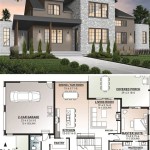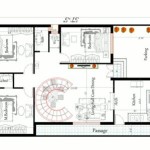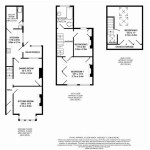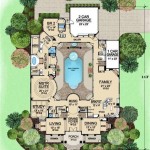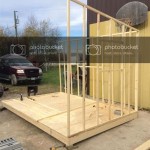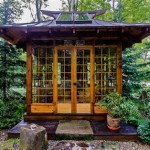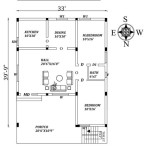Contemporary Custom Home Plans: Designing Your Dream Residence
Contemporary custom home plans represent a departure from standard, pre-designed housing options. These plans are meticulously crafted to reflect the unique lifestyle, preferences, and needs of the individuals or families who will inhabit the dwelling. Unlike cookie-cutter homes, contemporary custom designs prioritize individuality and a seamless integration of form and function.
The process of developing a contemporary custom home plan is collaborative, involving the homeowner, architect, and often interior designer. This collaborative approach ensures that the final design not only meets aesthetic expectations but also addresses practical concerns such as space utilization, energy efficiency, and accessibility. The goal is to create a home that is not just visually appealing but also perfectly tailored to the rhythms and routines of its occupants.
Contemporary design, in general, leans towards clean lines, open spaces, and a focus on natural light. Custom home plans in this style often incorporate large windows, minimalist detailing, and a connection to the surrounding environment. The emphasis is on creating a sense of calm and spaciousness, while also incorporating modern amenities and technologies.
Understanding the Key Benefits of Custom Home Design
Opting for a contemporary custom home plan over a pre-built home offers several significant advantages. The most notable benefit is the unparalleled level of personalization. With a custom plan, every aspect of the home, from the layout of the rooms to the placement of electrical outlets, can be tailored to the homeowner's specific requirements. This level of control is simply not possible with standard housing options.
Custom homes also allow for greater control over the budget. While the initial investment may seem higher than purchasing an existing home, custom plans enable homeowners to prioritize spending on the features that are most important to them. This could involve selecting high-quality materials, incorporating energy-efficient technologies, or investing in smart home automation systems. Furthermore, a well-designed custom home can appreciate in value more rapidly than a standard home, making it a sound financial investment.
Beyond personalization and budgetary control, custom home plans offer the opportunity to create a truly unique and distinctive residence. By working closely with an architect and designer, homeowners can express their personal style and create a home that reflects their individual taste. This can be particularly appealing to individuals who appreciate design and want to create a living space that is both beautiful and functional.
Furthermore, custom homes can be designed to accommodate specific needs, such as aging in place or accommodating individuals with disabilities. Features such as wider doorways, accessible bathrooms, and single-story layouts can be incorporated into the design to ensure that the home is comfortable and safe for everyone who lives there. This level of accommodation is often difficult or impossible to achieve with pre-built homes.
Exploring Key Design Elements in Contemporary Custom Homes
Several key design elements characterize contemporary custom home plans. These elements often overlap and work together to create a cohesive and visually appealing living space. Understanding these elements can help homeowners communicate their vision to architects and designers and ensure that the final design reflects their desired aesthetic.
Open floor plans are a hallmark of contemporary design. These plans typically feature large, interconnected living spaces that promote a sense of spaciousness and facilitate social interaction. Kitchens often flow seamlessly into living and dining areas, creating a central hub for family life and entertaining. Open floor plans also allow for greater flexibility in furniture arrangement and décor.
Natural light is another essential element of contemporary custom home design. Large windows, skylights, and strategically placed glass doors are used to maximize the amount of natural light that enters the home. This not only creates a brighter and more inviting living space but also reduces the need for artificial lighting, contributing to energy efficiency. Careful consideration is given to the orientation of the home to optimize sunlight exposure during different times of the day.
The use of sustainable materials and energy-efficient technologies is also a common feature of contemporary custom homes. Homeowners are increasingly concerned about the environmental impact of their homes and are seeking ways to reduce their carbon footprint. This can involve using recycled materials, incorporating solar panels, installing energy-efficient appliances, and implementing smart home automation systems. These features not only reduce energy consumption but also contribute to long-term cost savings.
Minimalist detailing is another defining characteristic of contemporary design. Clean lines, simple shapes, and a lack of ornamentation are used to create a sense of understated elegance. Clutter is minimized, and the focus is on creating a calm and uncluttered living space. This aesthetic often involves using neutral color palettes and incorporating natural materials such as wood, stone, and glass.
Finally, a connection to the surrounding environment is often emphasized in contemporary custom home plans. This can involve incorporating outdoor living spaces such as patios, decks, and gardens into the design. Large windows and glass doors are used to blur the boundaries between indoor and outdoor spaces, creating a seamless transition between the home and its natural surroundings. This connection to nature can enhance the overall sense of well-being and create a more relaxing and enjoyable living experience.
Navigating the Process of Creating a Custom Home Plan
The process of creating a contemporary custom home plan can be complex and time-consuming, but it is also a rewarding experience. It is essential to approach the process with a clear understanding of the steps involved and to work with experienced professionals who can guide you through each stage.
The first step is to define your needs and preferences. This involves thinking carefully about your lifestyle, your budget, and your design aesthetic. It is helpful to create a list of your must-have features and to gather inspiration from magazines, websites, and model homes. The more clearly you can articulate your vision, the easier it will be for your architect and designer to create a plan that meets your expectations.
Once you have a clear understanding of your needs and preferences, the next step is to select an architect. It is important to choose an architect who has experience designing contemporary homes and who understands your design aesthetic. Look at their portfolio, read reviews, and talk to past clients to get a sense of their work ethic and communication style. The architect will be your primary partner throughout the design process, so it is essential to choose someone you trust and feel comfortable working with.
After selecting an architect, you will work together to develop a preliminary design. This involves creating floor plans, elevations, and renderings that illustrate the overall layout and appearance of the home. The architect will take your input into account and will provide guidance on issues such as structural integrity, energy efficiency, and building codes. This is an iterative process, and you may need to go through several revisions before you are satisfied with the design.
Once the preliminary design is approved, the architect will create detailed construction documents. These documents include all the information that the builder will need to construct the home, including structural drawings, electrical plans, plumbing plans, and specifications for materials. It is essential to review these documents carefully to ensure that they accurately reflect your vision.
The final step is to select a builder. As with the architect, it is important to choose a builder who has experience constructing contemporary homes and who has a reputation for quality and reliability. Get bids from several builders and compare their prices, schedules, and references. It is also important to check their licenses and insurance to ensure that they are qualified to perform the work.
Building a custom home is a significant undertaking, but it is an investment that can provide years of enjoyment and satisfaction. By carefully planning and working with experienced professionals, you can create a home that is perfectly tailored to your needs and preferences.

Courtyard23 Semi Custom Home Plan 61custom Contemporary Modern House Plans

Contemporary House Plans Modern Home The Designers

Modern House Plans Blueprints Great Design

Contemporary House Plans Home Design Floor

Modern 2 Bedroom House Plan 61custom Contemporary Plans

Modern House Plans Sater Design Collection

Modern House Plans Contemporary Floor

Riverside Contemporary Home Design Sater Collection

House Plans Custom Home Dfd

A Quick Guide To Building Custom Home Modern House Plans By Mark Stewart

